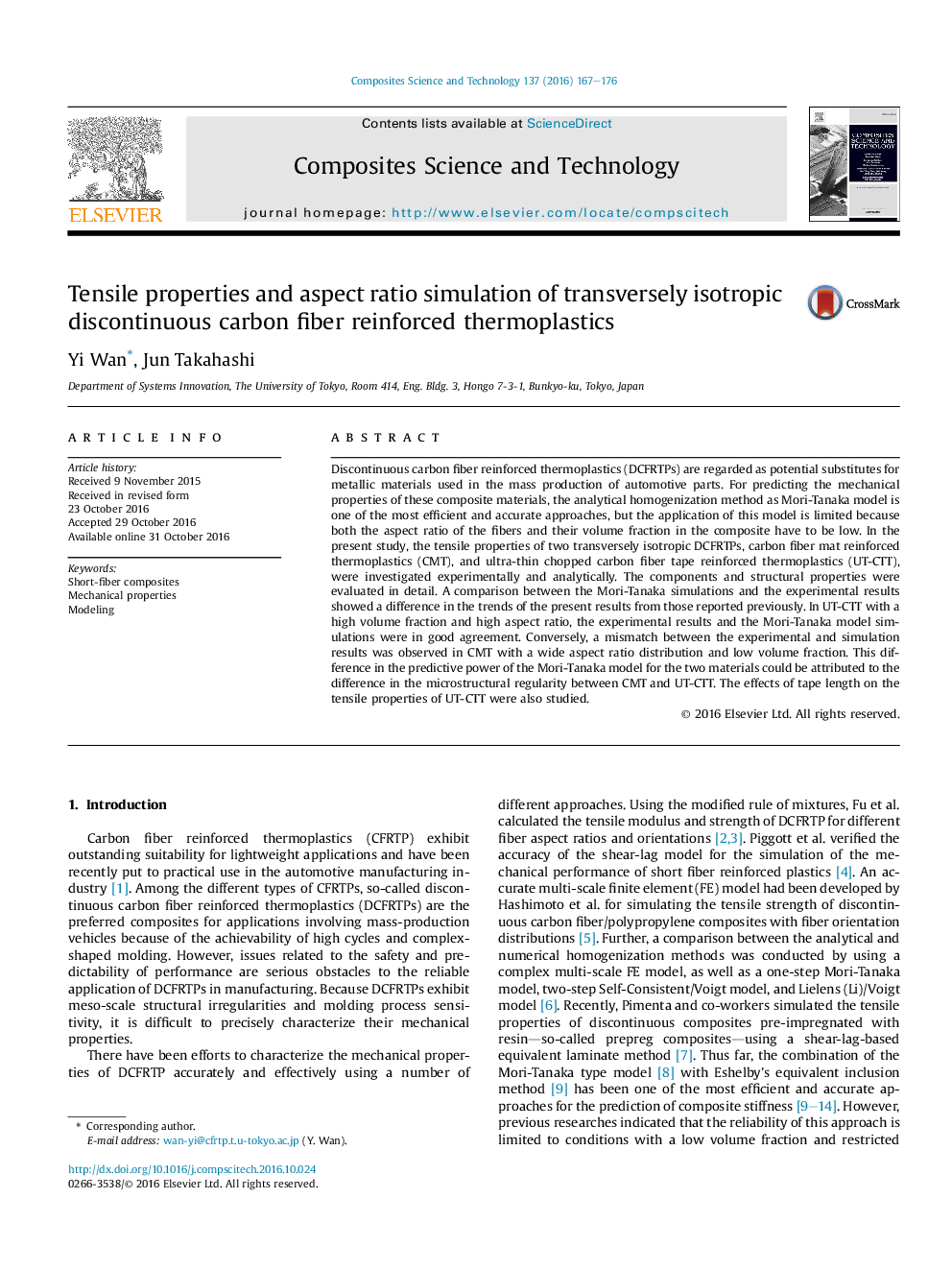| Article ID | Journal | Published Year | Pages | File Type |
|---|---|---|---|---|
| 5022372 | Composites Science and Technology | 2016 | 10 Pages |
Abstract
Discontinuous carbon fiber reinforced thermoplastics (DCFRTPs) are regarded as potential substitutes for metallic materials used in the mass production of automotive parts. For predicting the mechanical properties of these composite materials, the analytical homogenization method as Mori-Tanaka model is one of the most efficient and accurate approaches, but the application of this model is limited because both the aspect ratio of the fibers and their volume fraction in the composite have to be low. In the present study, the tensile properties of two transversely isotropic DCFRTPs, carbon fiber mat reinforced thermoplastics (CMT), and ultra-thin chopped carbon fiber tape reinforced thermoplastics (UT-CTT), were investigated experimentally and analytically. The components and structural properties were evaluated in detail. A comparison between the Mori-Tanaka simulations and the experimental results showed a difference in the trends of the present results from those reported previously. In UT-CTT with a high volume fraction and high aspect ratio, the experimental results and the Mori-Tanaka model simulations were in good agreement. Conversely, a mismatch between the experimental and simulation results was observed in CMT with a wide aspect ratio distribution and low volume fraction. This difference in the predictive power of the Mori-Tanaka model for the two materials could be attributed to the difference in the microstructural regularity between CMT and UT-CTT. The effects of tape length on the tensile properties of UT-CTT were also studied.
Related Topics
Physical Sciences and Engineering
Engineering
Engineering (General)
Authors
Yi Wan, Jun Takahashi,
